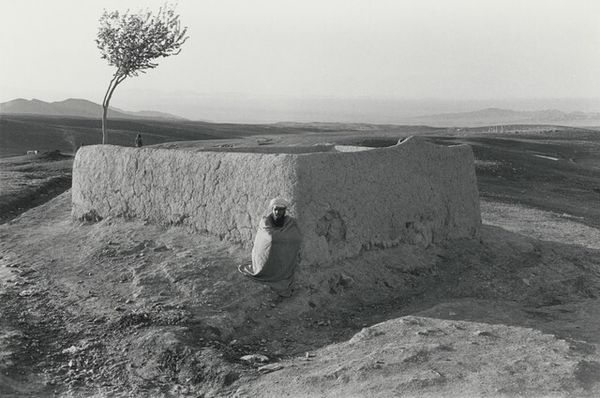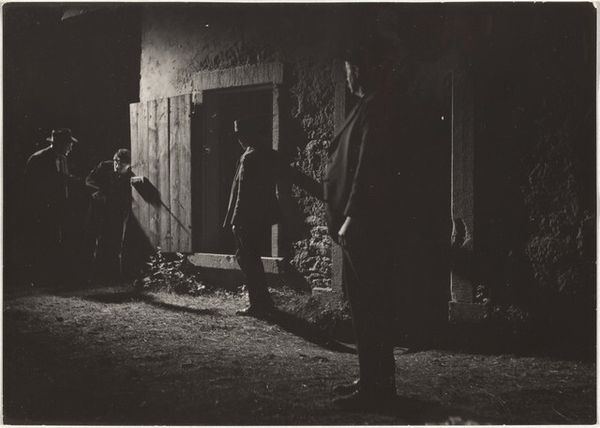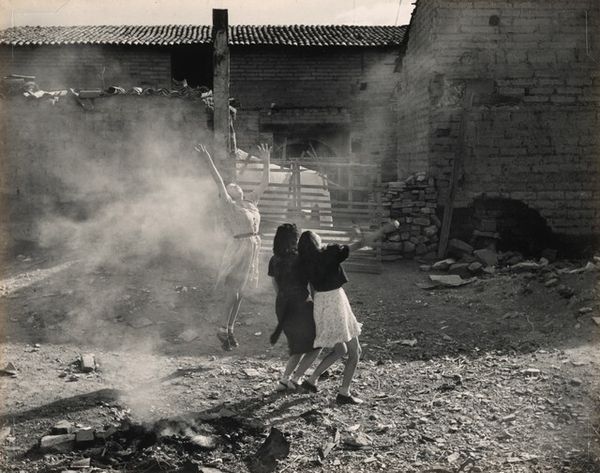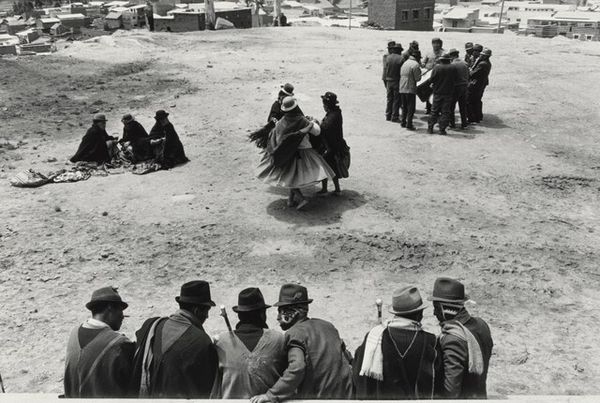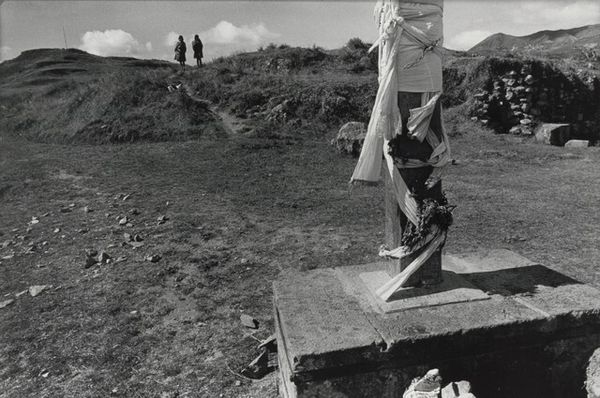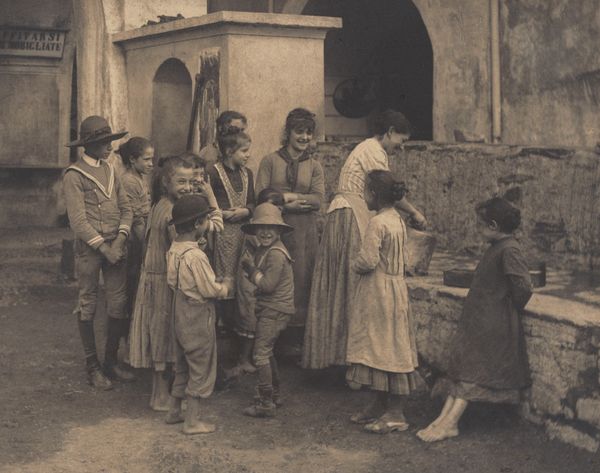
photography
#
portrait
#
black and white photography
#
landscape
#
street-photography
#
photography
#
black and white
#
monochrome photography
#
monochrome
Dimensions: image: 26.5 × 40 cm (10 7/16 × 15 3/4 in.) sheet: 35.56 × 43.18 cm (14 × 17 in.)
Copyright: National Gallery of Art: CC0 1.0
Curator: Ed Grazda’s "Wardak, Afghanistan," taken in 1982, presents us with a compelling look at daily life in a rural Afghan village. It's a monochrome photograph, rich in textural details and human presence. Editor: Immediately, I’m struck by the weightiness of it. There's a stillness, almost a somberness, that belies the apparent everyday scene. The adobe building dominates the frame, really grounding the figures in a particular space and time. Curator: I find myself drawn to the hand-built nature of everything depicted. Consider the raw texture of the building materials. You can almost feel the layers of earth and straw they used, which are naturally sourced. This connects directly to the means of its making, the available technology and readily sourced materials. Editor: Exactly. And within that space, we see layered narratives about community and resilience. The central figure holding a child becomes a symbol of familial strength, even vulnerability. I'm struck by how gender and age roles play out in their cultural environment and that political events are absent in this space. This adds so much historical and human depth. It speaks volumes about identity formation in complex social landscapes. Curator: Right. Furthermore, consider how the production of photographs itself functions within specific economies of value. What did Grazda's labor look like to produce this image, in Afghanistan? Where were materials sourced for his camera? To whose audiences was this photograph shown initially, and why? All questions worth reflecting upon! Editor: Absolutely. Photography, here, becomes an act of witnessing and then disseminating, opening pathways for broader discussions about how conflict affects individuals, families, and communities. We must not extract images from the wider global framework of the time. It creates conversations around trauma and how that can affect daily life. It allows space for human empathy and creates new narratives and intersectionality across art. Curator: It truly speaks volumes about what's left out or what can be interpreted. Editor: Agreed. Looking at Grazda’s image, I see how everyday stories, deeply affected by external factors, serve as both reminders and potent commentary about conflict and global challenges, told within small circles.
Comments
No comments
Be the first to comment and join the conversation on the ultimate creative platform.






